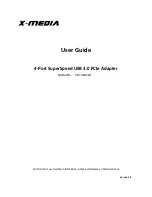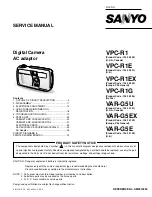
When using the
ping
command for fault isolation, first test the local host to verify it is running.
If the local host returns the data correctly, use the
ping
command to test remote hosts farther
and farther away from the local host.
If you do not specify command options, the
ping
command displays the results of each ICMP
request in sequence, the number of bytes received from the remote host, and the round-trip time.
If the output indicates lost packets, note the percentage. If you are losing ten percent or more,
this might indicate the network or remote host is extremely busy.
Also note the round-trip transmission times. Periodically high transmission times might indicate
the network or remote host is extremely busy. Consistently high transmission times might indicate
the local host is extremely busy.
See ping(1M) for more information on the command and its options.
Scanning the system hardware
Use the
ioscan
command to scan the system hardware and list the results. If you enter
ioscan
-f
, output similar to the following is displayed:
Example 6-1 Sample ioscan –f Output
# ioscan -f
Class I H/W Path Driver S/W State H/W Type Description
====================================================================
bc 0 root CLAIMED BUS_NEXUS
bc 1 8 ccio CLAIMED BUS_NEXUS I/O Adapter
ba 0 8/4 GSCtoPCI CLAIMED BUS_NEXUS PCI Bus Bridge - GSCtoPCI
lan 4 8/4/1/0 igelan CLAIMED INTERFACE HP PCI 1000Base-T Core
lan 5 8/4/2/0 igelan CLAIMED INTERFACE HP PCI 1000Base-T Core
ba 1 8/8 GSCtoPCI CLAIMED BUS_NEXUS PCI Bus Bridge - GSCtoPCI
lan 6 8/8/1/0 igelan CLAIMED INTERFACE HP PCI 1000Base-T Core
lan 7 8/8/2/0 igelan CLAIMED INTERFACE PCI(10110009) -- Built-in #2
ba 2 8/12 GSCtoPCI CLAIMED BUS_NEXUS PCI Bus Bridge - GSCtoPCI
lan 8 8/12/1/0 igelan CLAIMED INTERFACE HP PCI 1000Base-T Core
lan 9 8/12/2/0 igelan CLAIMED INTERFACE HP PCI 1000Base-T Core
bc 2 10 ccio CLAIMED BUS_NEXUS I/O Adapter
ext_bus 0 10/0 c720 CLAIMED INTERFACE GSC built-in Fast/Wide SCSI
target 0 10/0.6 tgt CLAIMED DEVICE
disk 0 10/0.6.0 sdisk CLAIMED DEVICE HP C2490WD
target 1 10/0.7 tgt CLAIMED DEVICE
ctl 0 10/0.7.0 sctl CLAIMED DEVICE Initiator
bc 3 10/4 bc CLAIMED BUS_NEXUS Bus Converter
tty 0 10/4/0 mux2 CLAIMED INTERFACE MUX
lanmux 0 10/4/4 lanmux0 CLAIMED INTERFACE HP J2146A - 802.3 LAN
lan 1 10/4/4.1 lan3 CLAIMED INTERFACE
ba 3 10/8 GSCtoPCI CLAIMED BUS_NEXUS PCI Bus Bridge - GSCtoPCI
lan 2 10/8/1/0 igelan CLAIMED INTERFACE HP PCI 1000Base-T Core
lan 3 10/8/2/0 igelan CLAIMED INTERFACE HP PCI 1000Base-T Core
ba 4 10/12 bus_adapter CLAIMED BUS_NEXUS Core I/O Adapter
ext_bus 1 10/12/5 c720 CLAIMED INTERFACE Built-in SCSI
target 2 10/12/5.2 tgt CLAIMED DEVICE
target 3 10/12/5.7 tgt CLAIMED DEVICE
ctl 1 10/12/5.7.0 sctl CLAIMED DEVICE Initiator
lan 0 10/12/6 lan2 CLAIMED INTERFACE Built-in LAN
ps2 0 10/12/7 ps2 CLAIMED INTERFACE Built-in Keyboard/Mouse
processor 0 32 processor CLAIMED PROCESSOR Processor
processor 1 34 processor CLAIMED PROCESSOR Processor
memory 0 49 memory CLAIMED MEMORY Memory
ba 0 8/4 GSCtoPCI CLAIMED BUS_NEXUS PCI Bus Bridge - GSCtoPCI
lan 4 8/4/1/0 igelan CLAIMED INTERFACE HP PCI 1000Base-T Core
lan 5 8/4/2/0 igelan CLAIMED INTERFACE HP PCI 1000Base-T Core
If there are multiple network physical ports installed in the system, one line for each port is
displayed. The example shows multiple 1000Base-T cards installed. See ioscan(1M) for more
information.
nettl tracing and logging tool
The
nettl
command captures network events and packets. The logging portion captures state
changes, errors, and connection establishment. The tracing portion capture inbound and outbound
nettl tracing and logging tool
81
















































